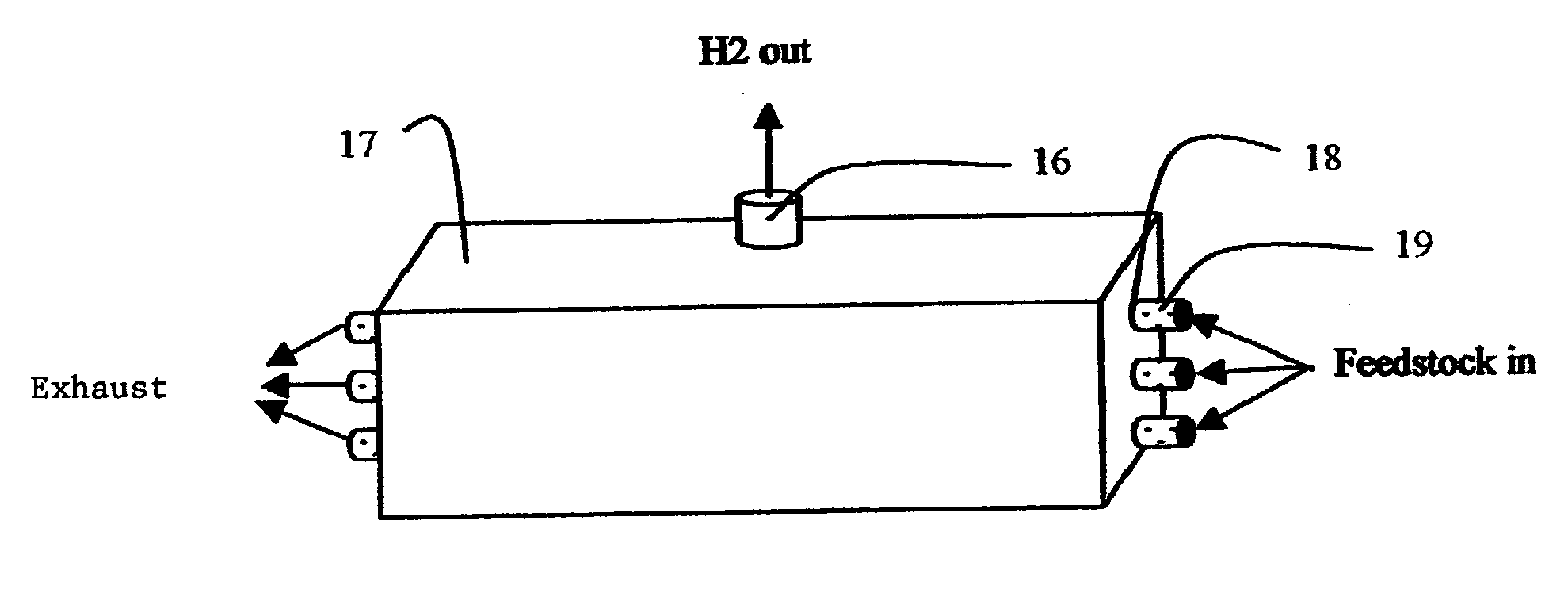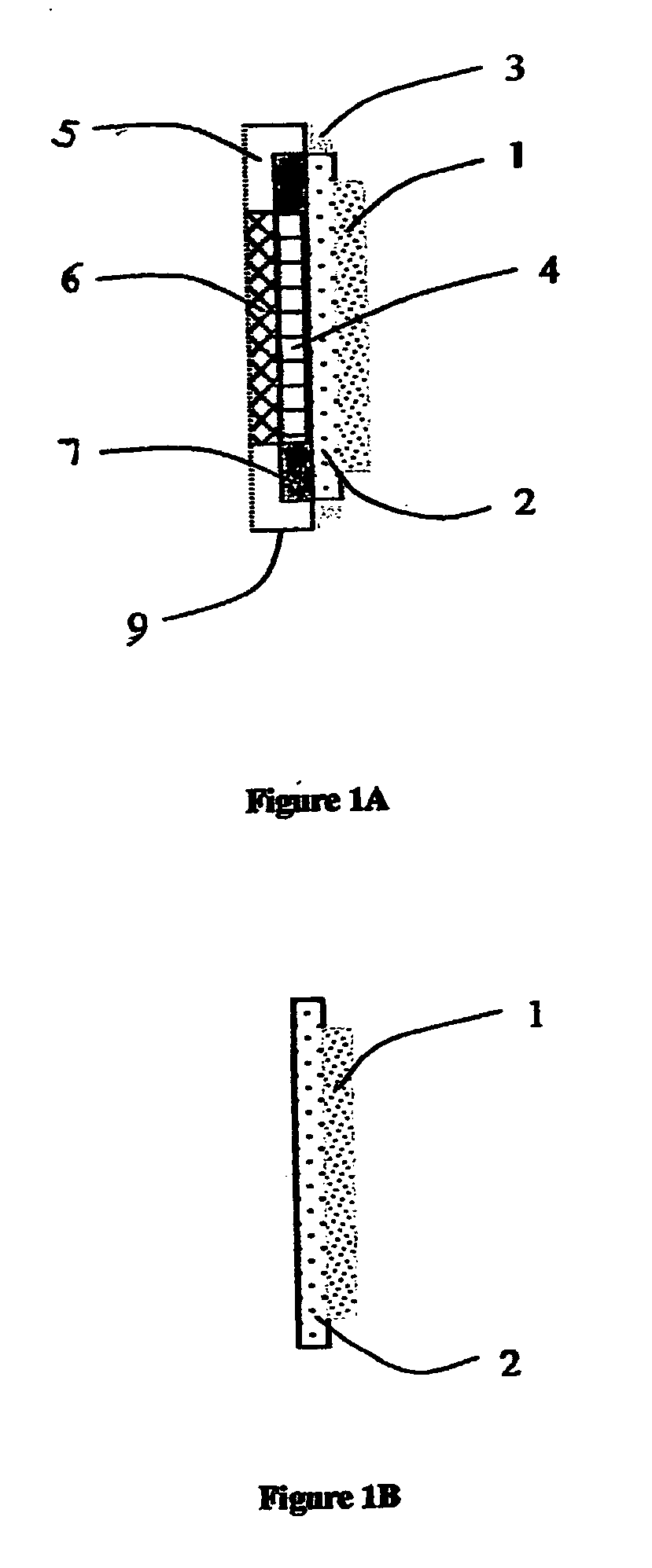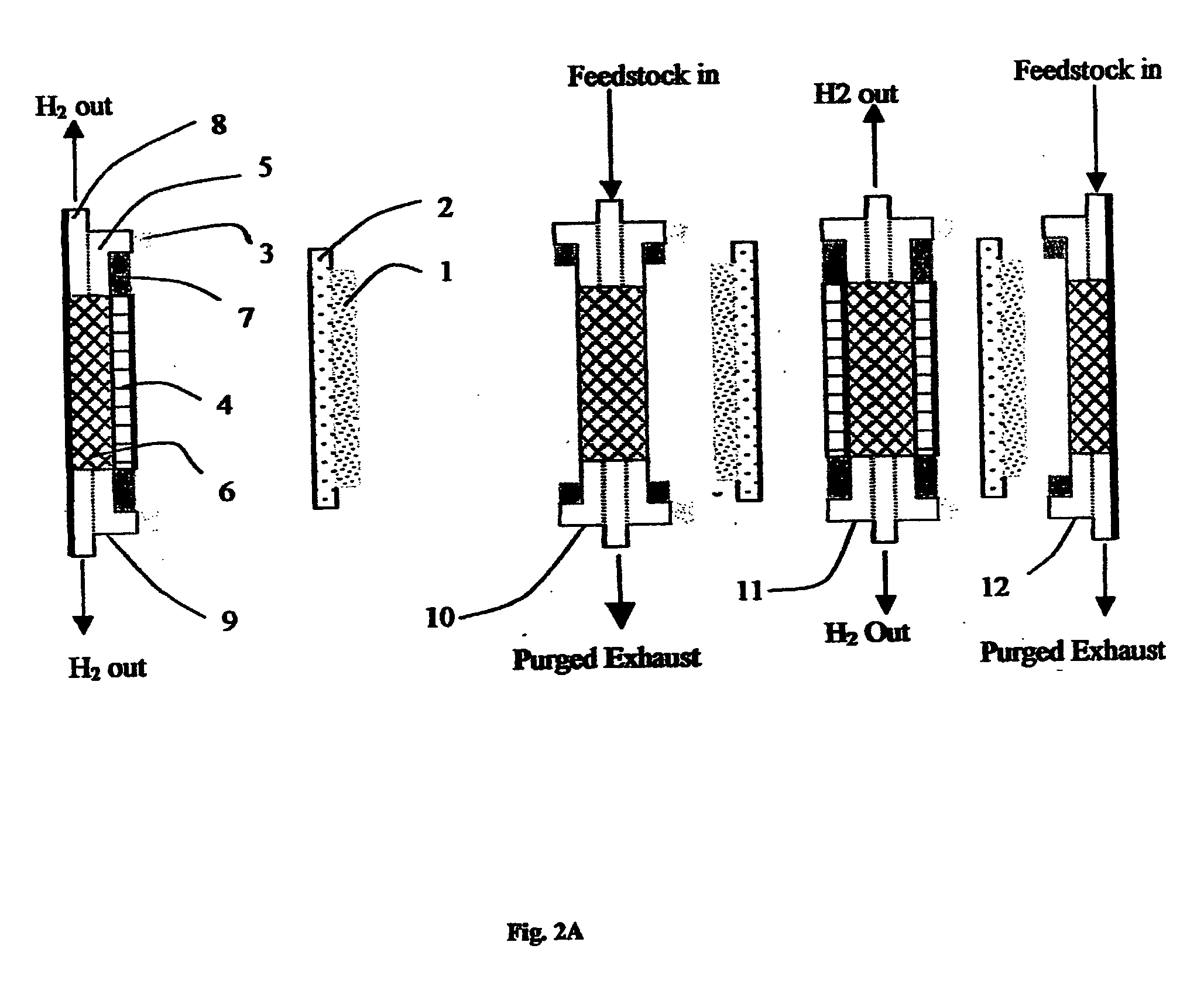Single stage membrane reactor for high purity hydrogen production
a single-stage membrane reactor and high-purity technology, applied in the direction of membranes, separation processes, chemical/physical/physical-chemical processes, etc., can solve the problems of complex purification processes, high cost, and high cost of metallic membranes, and achieve the effect of convenient high-pressure operation and efficient operation
- Summary
- Abstract
- Description
- Claims
- Application Information
AI Technical Summary
Benefits of technology
Problems solved by technology
Method used
Image
Examples
example 1
[0036] In a preferred embodiment of this invention, protonic ceramic powder consisting essentially of BaCe0.5Zr0.4Y0.1O3 composition is made using combustion synthesis or a chemical precipitation method. Cupric nitrate is then impregnated into the ceramic powder to reach incipient wetness, typically at a level of about 5 weight % of Cu in the blend. The impregnated powder is then calcined at about 300 degrees C. for about 10 hours. The calcined powder is then blended with suitable binders (such as polyvinyl butyral, B-79), plasticizers (such as butyl benzyl phthalate, S-160), dispersants (such as polyester / polyamide copolymer, KD-1) and solvents (such as combinations of isopropyl alcohol and toluene) and milled for about 12 hours to form a slurry. The slurry is de-aired and pumped into the reservoir of a tape casting machine, where it is casted onto a mylar sheet to form a green tape upon curing of about 0.004 inches (0.1 mm) in thickness. The tape is trimmed to desired dimension, p...
example 2
[0040] In a second embodiment of this invention, protonic ceramic powder consisting essentially of BaCe0.5Zr0.4Y0.1O3 composition is made using a combustion synthesis method. Cupric nitrate is then impregnated into the ceramic powder to reach incipient wetness, typically at a level of about 5 weight % of Cu in the blend. The impregnated powder is then calcined at about 300 degrees C. for about 10 hours. The calcined powder is then blended with suitable binders (such as polyvinyl butyral, B-79), dispersants (such as polyester / polyamide copolymer, KD-1) and solvents (such as combinations of isopropyl alcohol and toluene) and mixed to form a paste. The paste is then fed into an extruder containing a die of specific cylindrical opening, preferably less than 2 inches (5 cm) in outer diameter and 20 inches (50 cm) in length with wall thickness of about 0.02 inches (0.5 mm). The extruded green tube is inserted onto a rod shape firing setter and sintered in air at about 1450 degrees C. for ...
example 3
[0044] In one example of operation of a membrane reactor as described in Example 1 and 2, the entire assembly is heated to a temperature above about 750 degrees C. De-ionized water is introduced into a pressure vessel and heated to above 100 degrees C. The exiting steam is then mixed with desulfurized natural gas at a molecular ratio of 2:1 or 3:1 and this mixed feedstock stream is compressed and regulated at 80 psig. The mixed feedstock stream is channeled to the inlets of the membrane reactors where the exhaust ports are fitted with regulating devices to maintain internal pressure of no less than 80 psig. Hydrogen gas product is suctioned out using a vacuum pump or purged out with pressurized helium gas. Alternatively, metal hydride elements may be incorporated into the product gas chamber to bind with the hydrogen produced in situ. The exhaust or waste gas stream is fed into a burner to generate supplemental heat for the membrane reactor.
PUM
| Property | Measurement | Unit |
|---|---|---|
| thickness | aaaaa | aaaaa |
| diameter | aaaaa | aaaaa |
| thickness | aaaaa | aaaaa |
Abstract
Description
Claims
Application Information
 Login to View More
Login to View More - R&D
- Intellectual Property
- Life Sciences
- Materials
- Tech Scout
- Unparalleled Data Quality
- Higher Quality Content
- 60% Fewer Hallucinations
Browse by: Latest US Patents, China's latest patents, Technical Efficacy Thesaurus, Application Domain, Technology Topic, Popular Technical Reports.
© 2025 PatSnap. All rights reserved.Legal|Privacy policy|Modern Slavery Act Transparency Statement|Sitemap|About US| Contact US: help@patsnap.com



